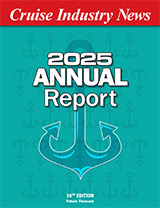DNV-GL has announced that it will make its new rules for classification of ships publicly available online for the first time today. After what it calls an unprecedented development and review process, involving 250 internal experts and more than 800 customers and maritime stakeholders, it said the rules set a new benchmark. “The result of the combined experience and expertise of two leading classification societies, the new rules are modern, easy to work with, industry-driven, efficient, and ready for the future.”
“This is an historic moment,” commented Remi Eriksen, DNV GL Group president and CEO. “After such a thorough process it is very exciting to launch the new DNV GL classification rules. The engagement of our customers and industry stakeholders has been overwhelming. From our initial discussions, through the review and external hearing process we have received invaluable input and we are deeply grateful for the consideration and enthusiasm of all involved. I look forward to following the many joint development projects using the new classification rules already underway,” Eriksen said.
“I’m proud we took advantage of the unique opportunity to have a fresh look at our rules and have created a new industry benchmark,” said Knut Oerbeck-Nilssen, CEO DNV GL – Maritime. “The dedication of our customers has been outstanding. Together with them we have taken up the challenge of taking classification into the future. I believe this new rule set gives us an even better basis to deliver the safety, efficiency and quality our customers expect.”
Through the process of developing the new DNV GL rules over 7,000 pages were reviewed, both internally and externally. In all, more than 2,000 detailed comments by yards, manufacturers, owners, academics, flag states and other maritime stakeholders were submitted. This extensive consultation process resulted in more than 700 rule modifications – adjustments triggered directly by the industry’s expertise.
One of the most significant advances in the new rules, according to DNV-GL, is the introduction of Equivalent Design Waves (EDW) to calculate environmental loads. It said that EDW enables a more accurate representation of these loads and consequently a more precise stress description of a vessel’s structure.
The reworking of the rules has allowed DNV GL to incorporate and integrate more modern tools and software, making them responsive to future developments. The rules also support the application of the latest technologies including battery installations and hybrid propulsion concepts, gas-fuelled readiness and LNG bunkering vessels through additional class notations.
The new DNV GL rules will enter into force on 1 January 2016.



